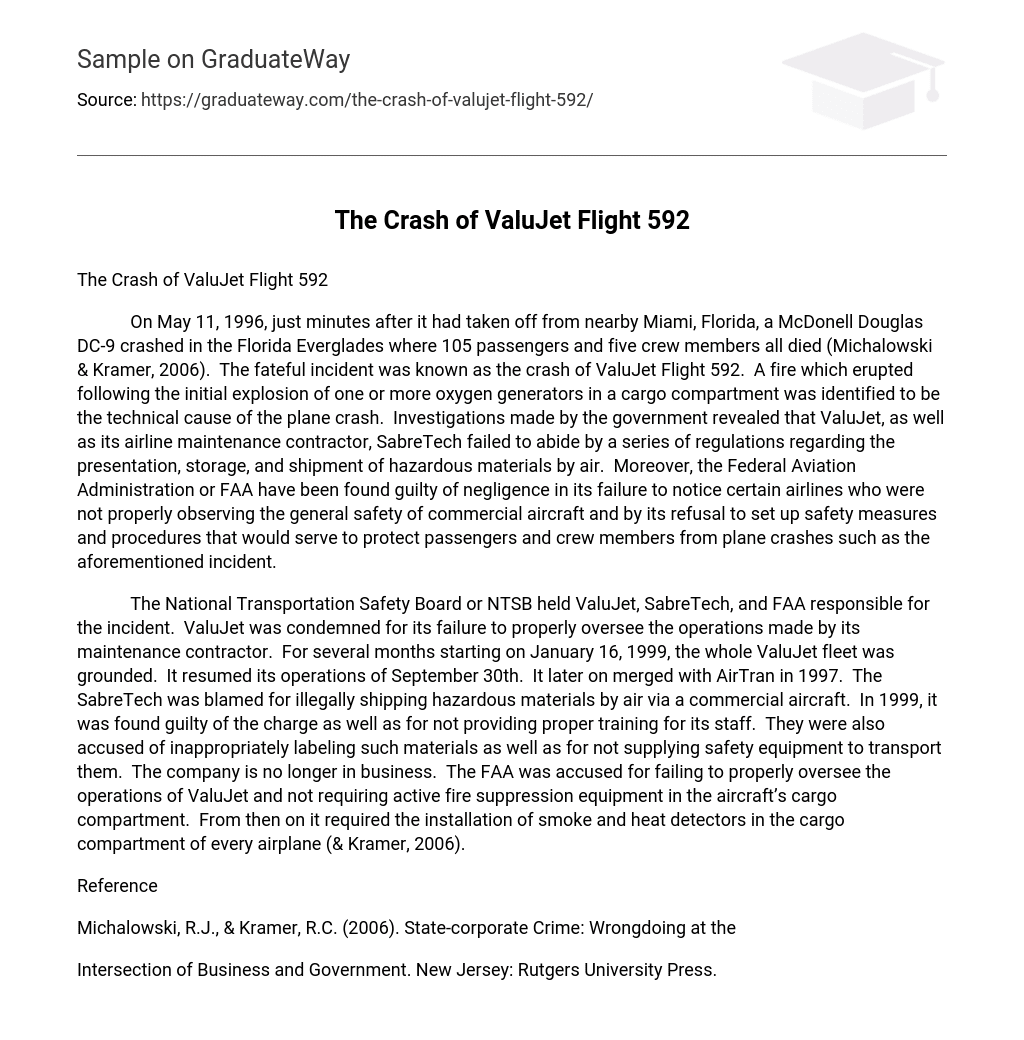On May 11, 1996, just minutes after it had taken off from nearby Miami, Florida, a McDonell Douglas DC-9 crashed in the Florida Everglades where 105 passengers and five crew members all died (Michalowski & Kramer, 2006). The fateful incident was known as the crash of ValuJet Flight 592. A fire which erupted following the initial explosion of one or more oxygen generators in a cargo compartment was identified to be the technical cause of the plane crash. Investigations made by the government revealed that ValuJet, as well as its airline maintenance contractor, SabreTech failed to abide by a series of regulations regarding the presentation, storage, and shipment of hazardous materials by air. Moreover, the Federal Aviation Administration or FAA have been found guilty of negligence in its failure to notice certain airlines who were not properly observing the general safety of commercial aircraft and by its refusal to set up safety measures and procedures that would serve to protect passengers and crew members from plane crashes such as the aforementioned incident.
The National Transportation Safety Board or NTSB held ValuJet, SabreTech, and FAA responsible for the incident. ValuJet was condemned for its failure to properly oversee the operations made by its maintenance contractor. For several months starting on January 16, 1999, the whole ValuJet fleet was grounded. It resumed its operations of September 30th. It later on merged with AirTran in 1997. The SabreTech was blamed for illegally shipping hazardous materials by air via a commercial aircraft. In 1999, it was found guilty of the charge as well as for not providing proper training for its staff. They were also accused of inappropriately labeling such materials as well as for not supplying safety equipment to transport them. The company is no longer in business. The FAA was accused for failing to properly oversee the operations of ValuJet and not requiring active fire suppression equipment in the aircraft’s cargo compartment. From then on it required the installation of smoke and heat detectors in the cargo compartment of every airplane (& Kramer, 2006).
Reference
Michalowski, R.J., & Kramer, R.C. (2006). State-corporate Crime: Wrongdoing at the
Intersection of Business and Government. New Jersey: Rutgers University Press.





